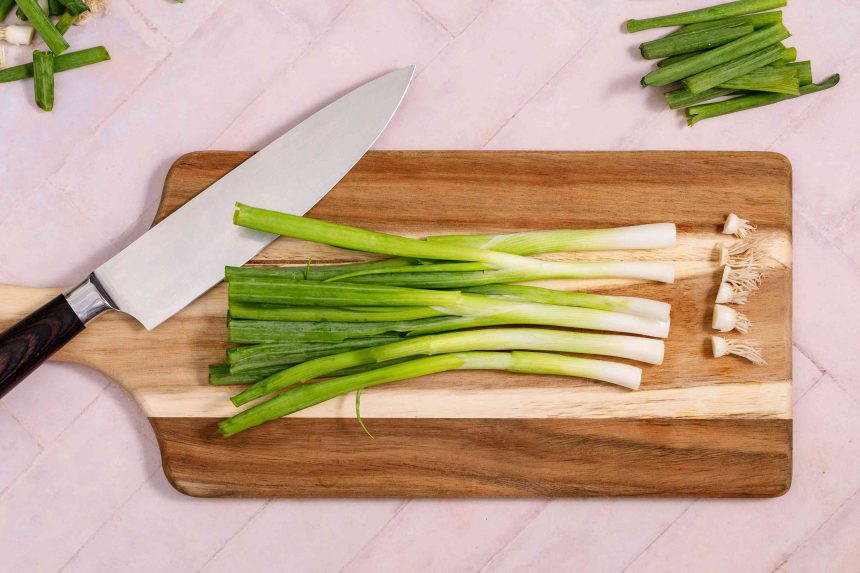Have you peeked at your grocery receipts lately? Food prices continue to rise year after year. The pint of strawberries you once paid $4 for five years ago now costs around $5. This doesn’t sound substantial, until you consider the impact on your entire cart—and realize that the average household wastes about 32% of all food that enters the home.
In addition to being a burden on Mother Nature, this wasted food adds up fast: to the tune of $1,500 per household each year. Composting can help ameliorate the environmental impact, but the Environmental Protection Agency (EPA) estimates that a mere 4% of wasted food is composted; the rest ends up in landfills, the sewer system, or combustion facilities.
There’s no need to get down in the dumps about this scenario of rising food prices and widespread food waste. We’re digging up savvy chef tips to help you conquer the largest source of food waste: produce.
Food Scraps You Can Eat (Don’t Throw These Away!)
There’s extra nutrients and flavor hanging out in a lot of the parts of fruits and vegetables you might normally toss.
“Although I can’t say everything in the fruit and vegetable world is edible, most things are,” says Herrera. “My rule of thumb is always ask yourself if this is truly ‘trash.’ Challenge yourself to reduce waste and get creative. If you can’t repurpose it, composting is always the best alternative.”
You have the green light to eat all of the fruit and vegetable scraps listed below. If you have any questions about whether other produce scraps are safe to consume, check the websites of the FDA or ReFED, a non-profit focused on reducing food waste.
“Please always wash your produce well before eating, especially if you plan to consume the skins or peels,” advises Brekke.
Apple Peels and Cores
Discard those not-great-to-eat seeds, then use the core and the peels to simmer down into jam or apple butter to spread in sandwiches and use on charcuterie boards. You can even add peels to your morning fruit smoothie.
Asparagus Ends
If you slice off the woody ends or use a vegetable peeler to thin thicker stalks, save those asparagus extras to make a “delightful spring soup,” Baldwin says. The ends make for creamy soups like our Creamy Potato and Asparagus Soup, since you can blitz them into a more appealing texture. Cooking also helps mellow out the sometimes-bitter flavor.
Broccoli Stems
Just like you can eat broccolini from floret to end, broccoli stems are absolutely edible. After you’ve used the florets in your favorite broccoli recipes, use a vegetable peeler to remove the tough outer skin of the stems, then slice them to add to stir-fries, fried rice, or soups, like this five-star Copycat Panera Broccoli Cheddar Soup that reviewers deem “so easy and delicious.”
Jacob Fox
Carrot Tops
Replace some or all of the fresh basil in your favorite pesto recipe with carrot tops, then toss that pesto with pasta, spoon it over steak or chicken, use it as a salad dressing, or drizzle it over roasted carrots for a root-to-stem side dish. You can also dice and toss them into salads.
Celery Leaves
We believe celery is one of the most underrated veggies, but the leaves pack major flavor and deserve their due, too. Add them to pesto or use them as a garnish for vegetable side dishes and salads.
Citrus Peels and Juiced Flesh
Don’t discard those juiced lemon halves. Instead, Brekke suggests stealing a Test Kitchen trick.
“We save our lemons after juicing so that we can run them in our garbage disposals,” she says. “The skins are full of brightly aromatic natural oils that will deodorize your sink, and the tough skins will also help to rub off any gunk that has built up in the disposal.”
After you use the flesh of oranges, lemons, limes, or grapefruit for wedges, supremes, or juicing, you can dehydrate the peels. Once dry, use a spice grinder or coffee grinder to blitz them into a fine powder. Mix with salt or sugar to rim a cocktail glass (lime-salt margarita, anyone?) or to use as a dusting on sugar cookies, fruit tarts, or crème brûlée.
Grant Webster
Corn Cobs
Once you’ve shucked and trimmed the kernels from the cob, place the cobs in a pot of water and simmer this into a broth, Williams suggests. Use 2 cups of water for every 1 corn cob, add a quartered onion and a handful of fresh herbs. Bring to a boil then simmer for 1 hour and strain. The result is “sweet, slightly creamy, and full of corn flavor,” Williams says, and is dreamy stirred into polenta, soups and stews, pastas, or skillet recipes.
Green Onion Roots
One of our favorite fruit and vegetable scrap tricks of all is to grow new produce from parts you might normally toss, which you can do with green onion roots for a never-ending supply.
Herb Stems
The stems of tender fresh herbs like cilantro, parsley, basil, mint, and dill taste just as incredible—and sometimes even more powerfully herbaceous—than the leaves. Finely chop them and use them alongside the leaves.
“Woodier stems found on tougher herbs like thyme, rosemary, sage, and oregano, especially when they’re more mature, are best to discard though,” Brekke says.
Leafy Green Vegetable Stems
True, the stems of sturdy leafy greens including Swiss chard, collard, kale, and mustard greens aren’t always pleasant to eat in salads or sautés. But those same stems are briny, tender, and a tasty addition to sandwiches or relishes once you pickle them. Try them as part of a Garlicky Pickled Mixed Veggie blend.
Mushroom Stems
The caps of mushrooms come in clutch for stuffed mushrooms and pan sauces, but don’t sleep on the stems. Dice ‘shroom stems to add to fried rice, beef wellington, and bread stuffing. Or make a umami-rich mushroom broth with dried mushrooms and stems.
Onion and Garlic Skins
Label a freezer zip-top bag “broth,” and fill it with scraps as you cook. Among the most flavorful things to infuse: the skins and trimmings from all types of onions and garlic. Feel free to add any other trimmings or odds and ends before they’re past their prime to preserve them until you’re ready to make a batch of homemade vegetable broth.
Potato Peels
Potato peels are prime contenders for stock as well. Brekke also likes turning them into chips.
“Toss them with oil and bake or deep-fry for a snack,” she says. Or just leave the potato peels on the spuds. The same holds true for many other root vegetables, including carrots and sweet potatoes—there’s no need to peel any of these items if you wash and scrub them clean.
Squash Seeds
You’re probably familiar with the fact that you can roast and savor pumpkin seeds. The same holds true for the seeds of other varieties of squash, including acorn and butternut. Our Roasted Pumpkin Seeds recipe asks for just 15 minutes of hands-on time.
Radish Tops
As long as they’re not wilted or too dinged up, “use the radish top to make a twist on green goddess dressing,” Baldwin recommends.
“Blanch the tops, squeeze them dry, then incorporate them into the herb mixture to your favorite green goddess recipe.” We love a combo that includes ½ avocado, ½ cup buttermilk, 1/4 cup plain Greek yogurt, 1 grated garlic clove, ¼ cup fresh herbs or blanched radish tops, 1 teaspoon anchovy paste, and a squeeze of lemon. Season to taste.
Strawberry Tops
You may trim off the stem end of strawberries on autopilot at this point. If so, here’s a fact that will save you time and food waste: You can eat the leaves! Remove them if you’re cooking the berries, as they’ll turn a not-so-appetizing green-black hue. Otherwise, you can use them in smoothies, salads, and sauces.
Watermelon Rinds
When peak watermelon season blissfully arrives, we’re often so busy celebrating and savoring the flesh that we almost overlook the rind—no longer. Since we perfected the Best Pickled Watermelon recipe, not a melon goes by that we don’t make the most of. Both the white flesh and the green rind are prime candidates for pickling, then featuring in cocktails or lemonade, as part of a cheese bowls or boards, and incorporating into salads.
Credits
A special thank you to the following culinary experts who also contributed to research for our fruit and vegetable scrap guide: Nathan Bychinski, executive chef at Red Eye Brewing Company in Wausau, Wisconsin; Kevin Coulter, executive chef at Hotel Verdant in Racine, Wisconsin; Selena Darrow, a Green Bay, Wisconsin-based chef and owner of the culinary consulting company, Culinary Innovations; Jonathan Gutierrez, executive chef at the Grand Geneva Resort & Spa in Lake Geneva, Wisconsin; Joe Heppe, culinary director for Geronimo Hospitality Group in Beloit, Wisconsin; Matthew Hyland, chef and culinary partner at Zoé Tong in Austin, Texas; Jeff Homuth, owner of Hayward Mercantile Co. LLC gourmet grocery store in Hayward, Wisconsin; Eric JaeHo Choi, executive chef of C as in Charlie in New York City; Rick Martinez, a Mazatlán, Mexico-based chef and the author of Mi Cocina; Michael Sibert, chef and CEO of White Wine & Butter in Greenville, South Carolina; Chris Williams, chef-owner at Lucille’s in Houston, Texas.





